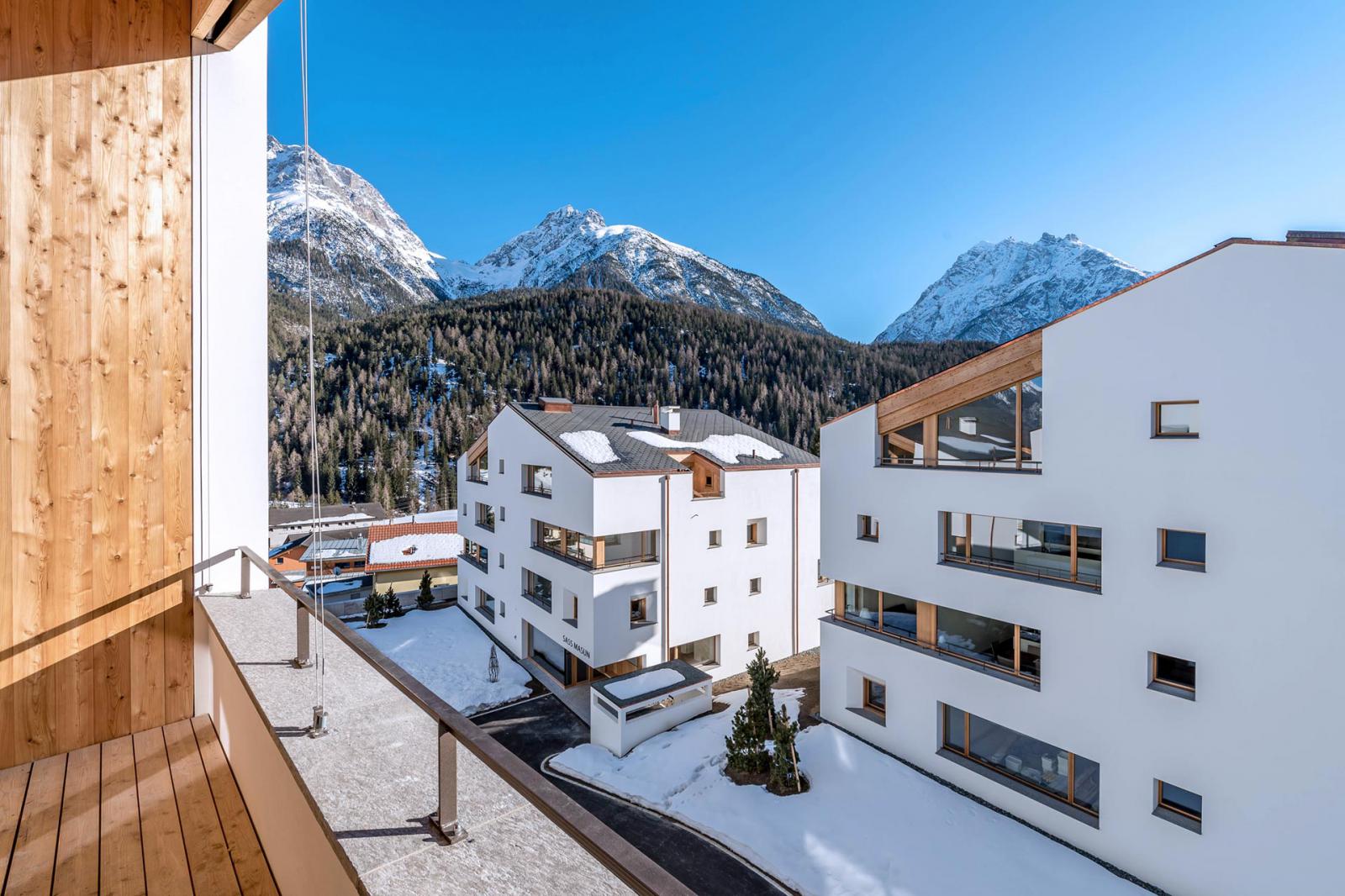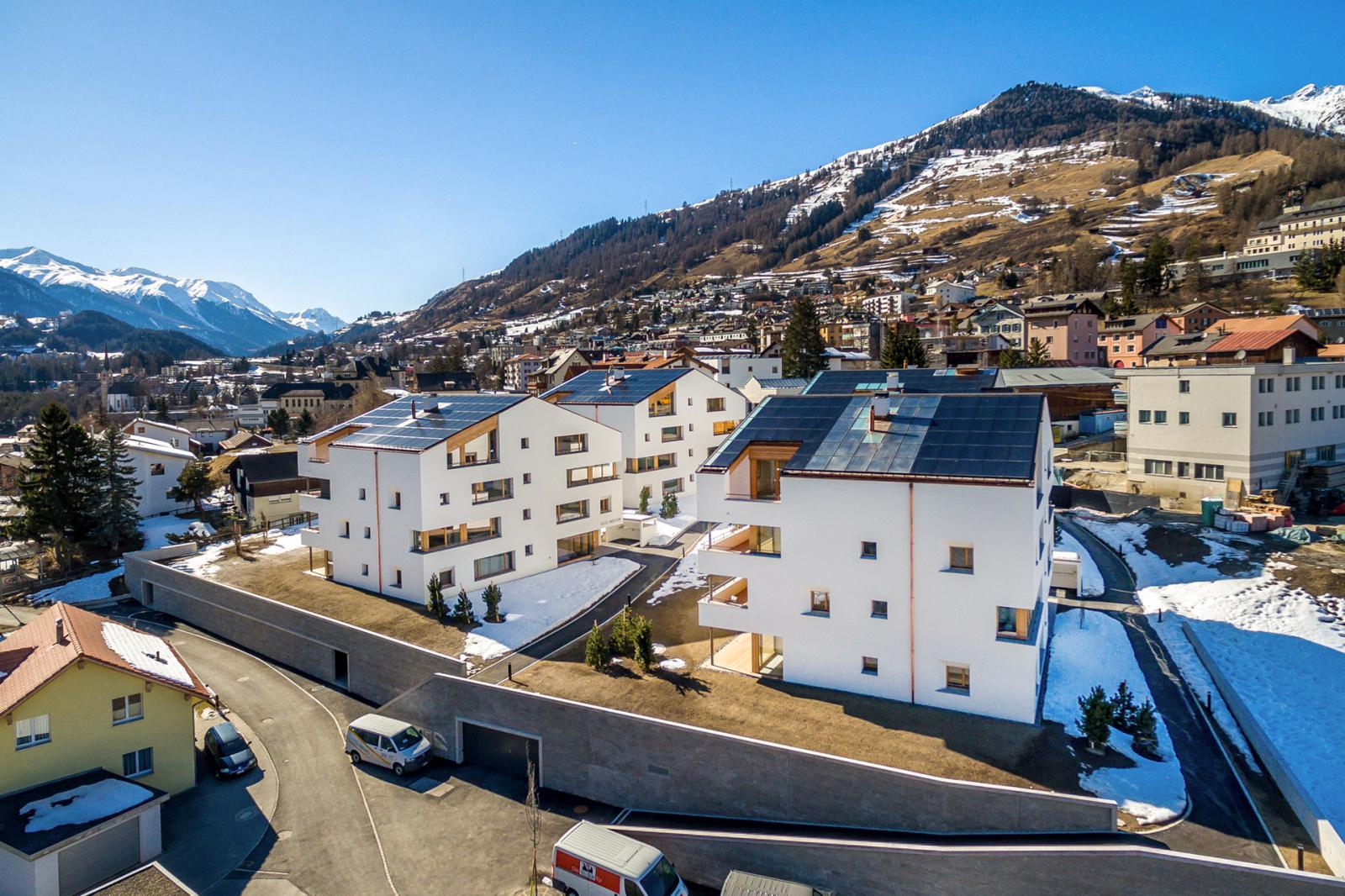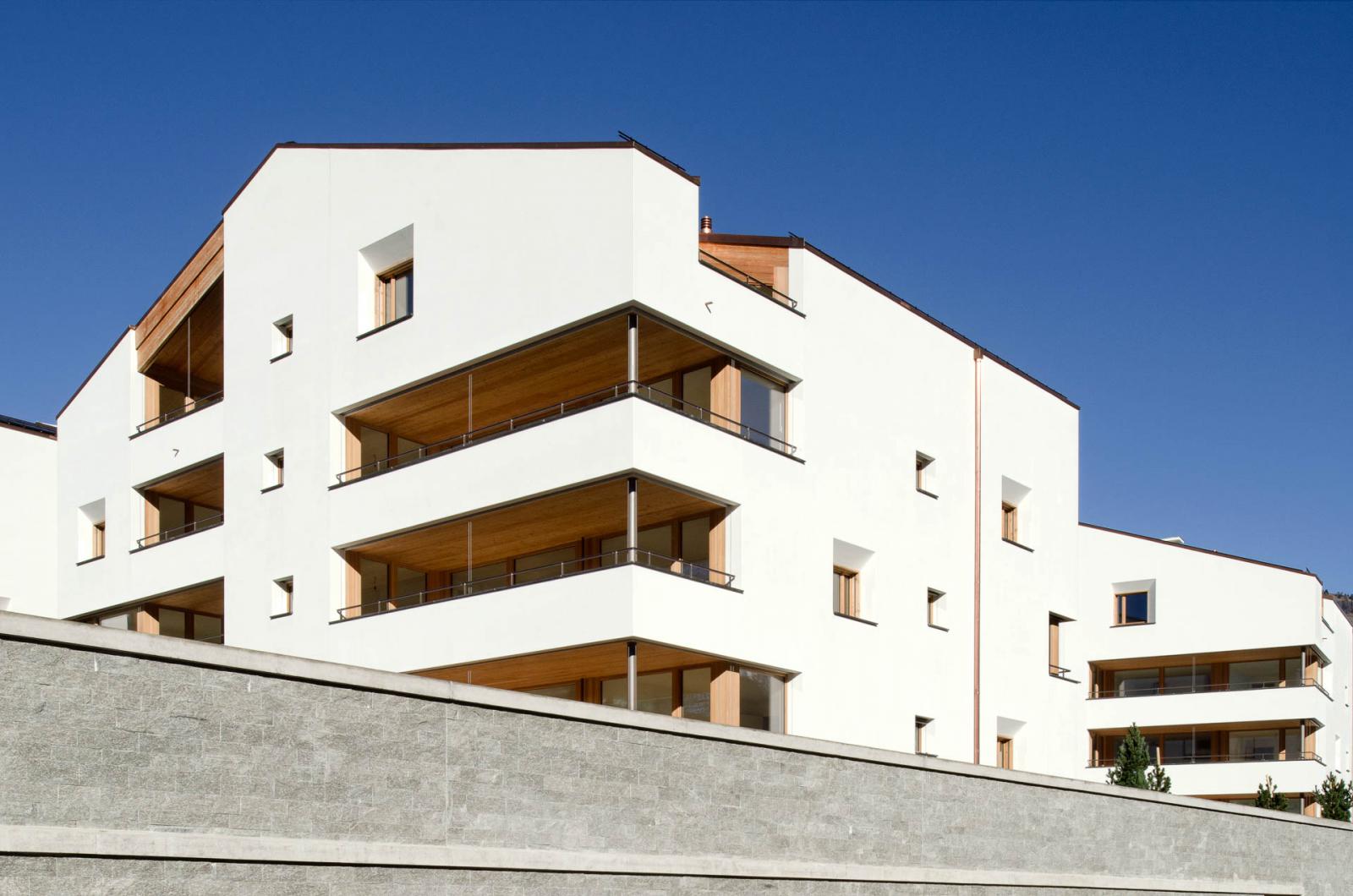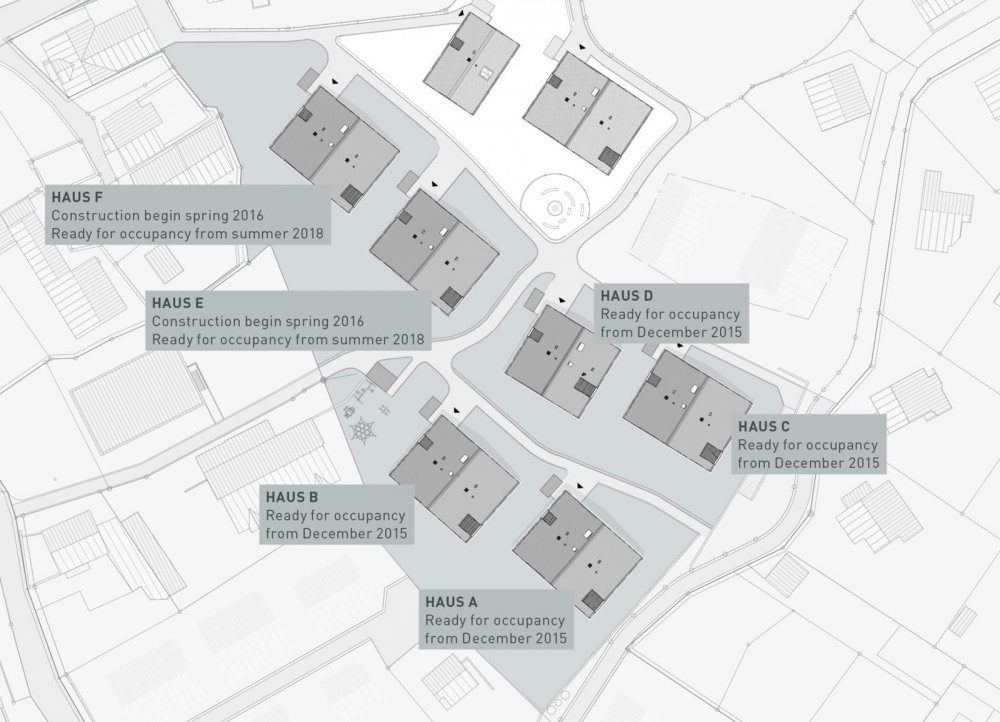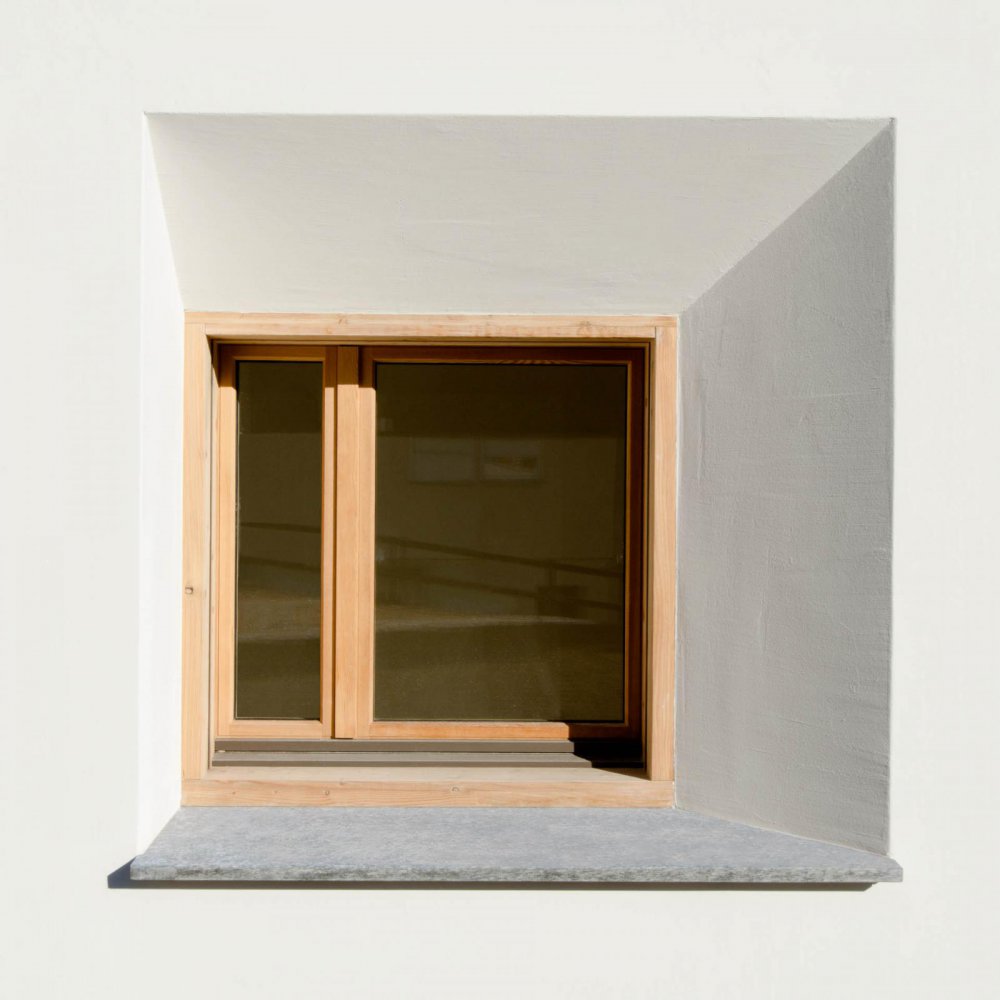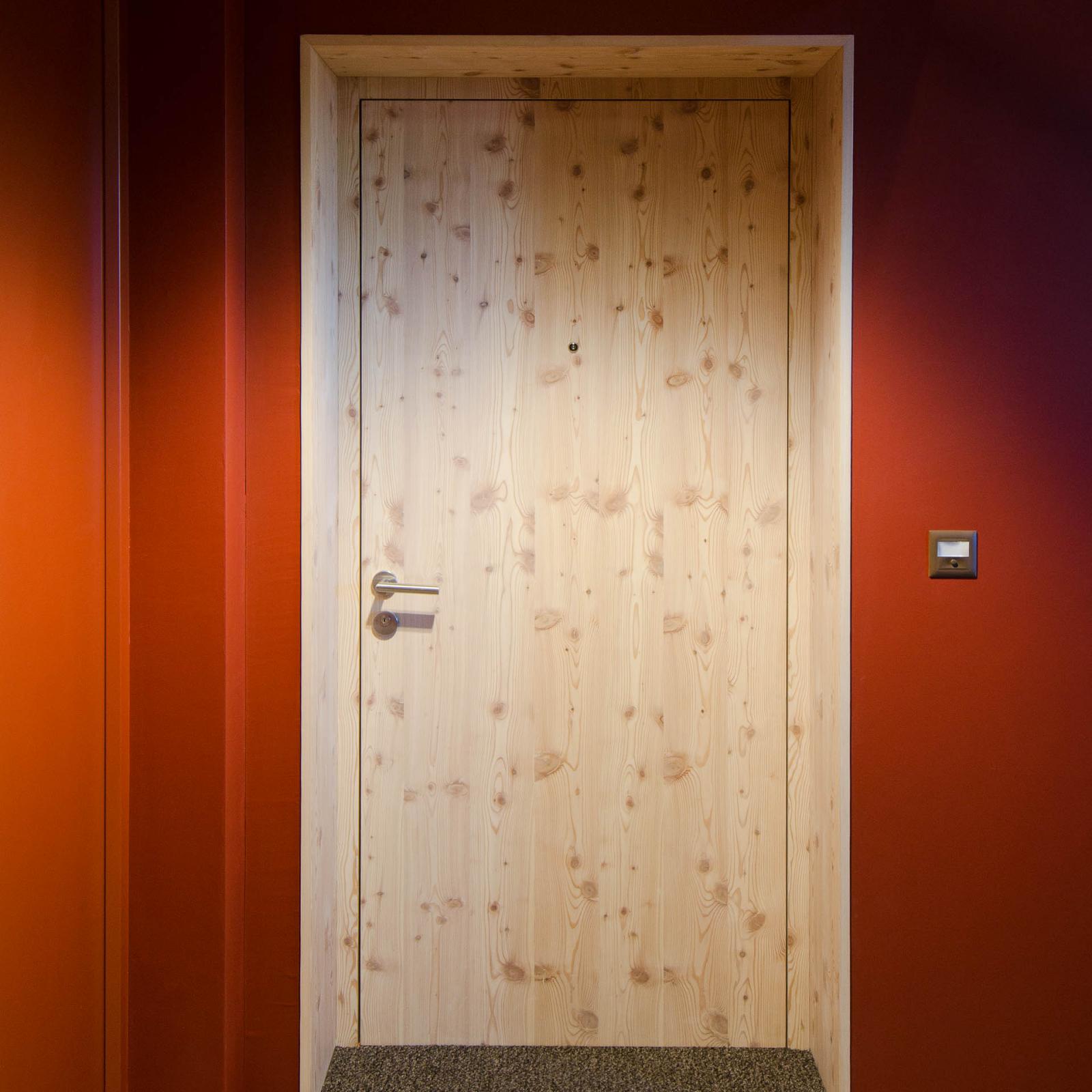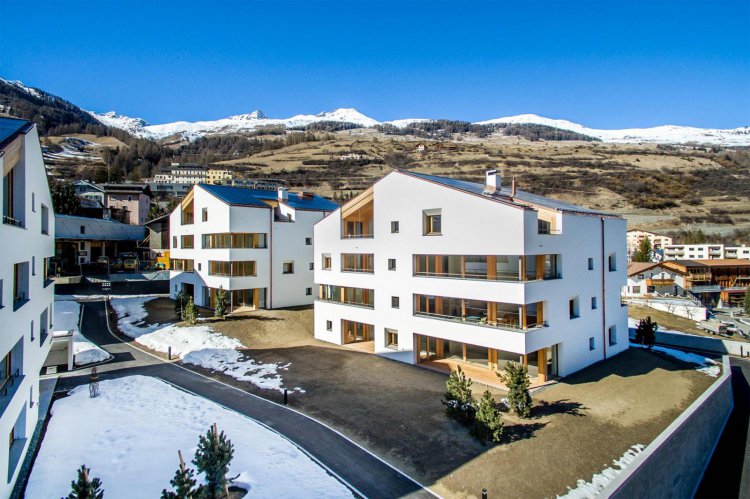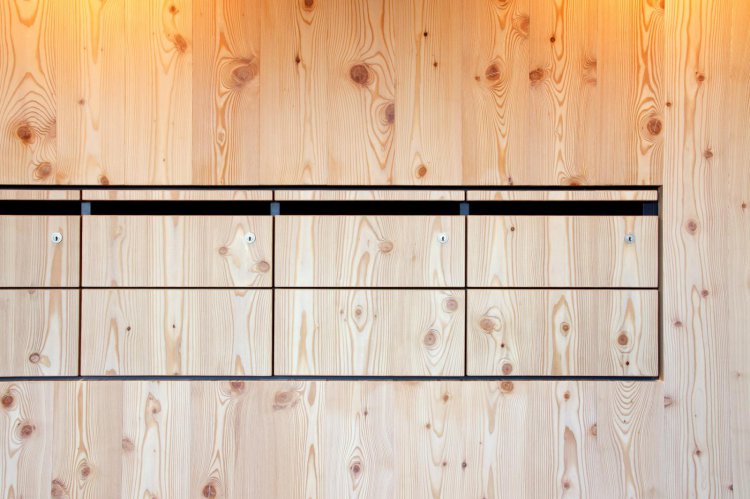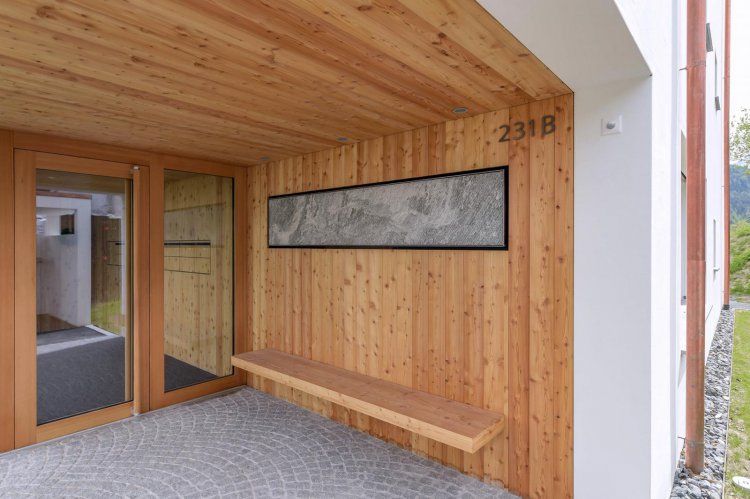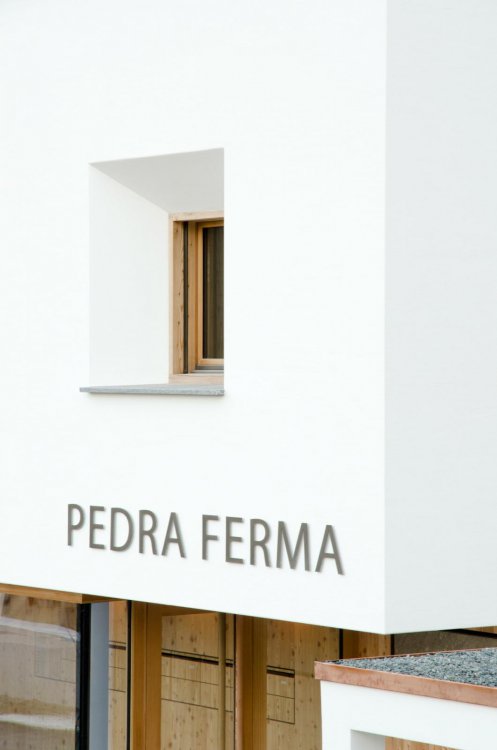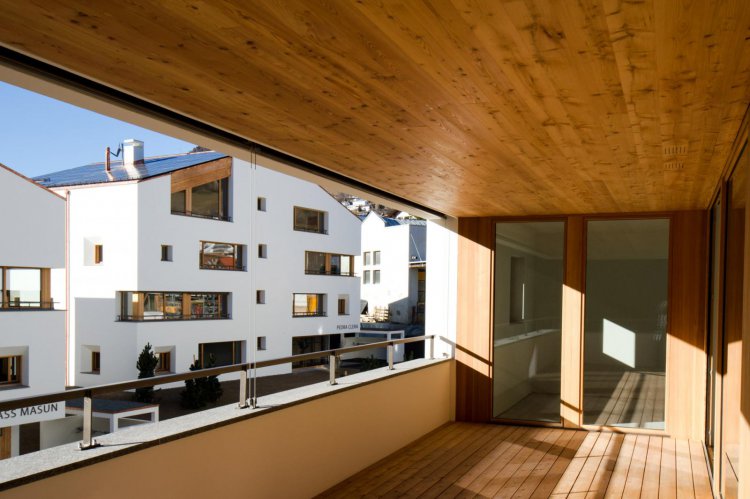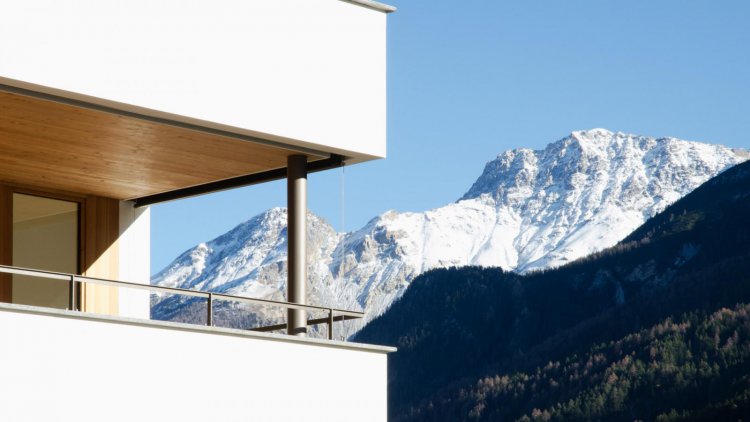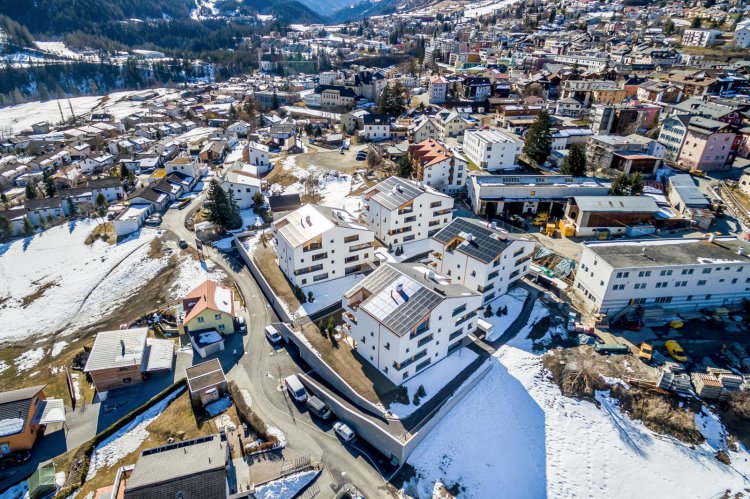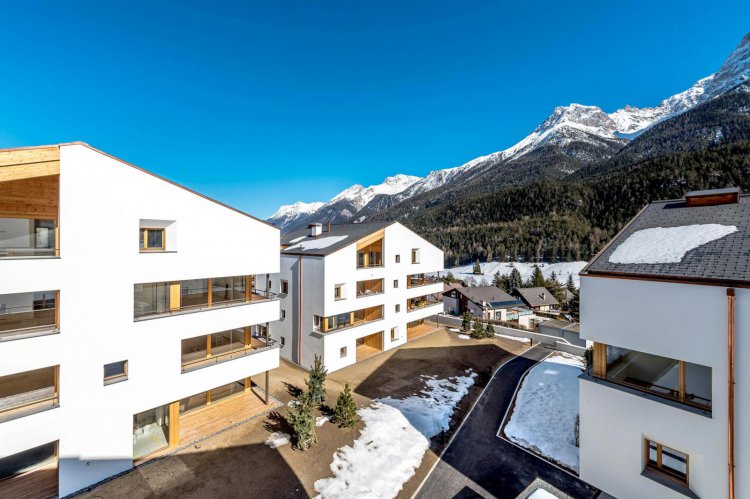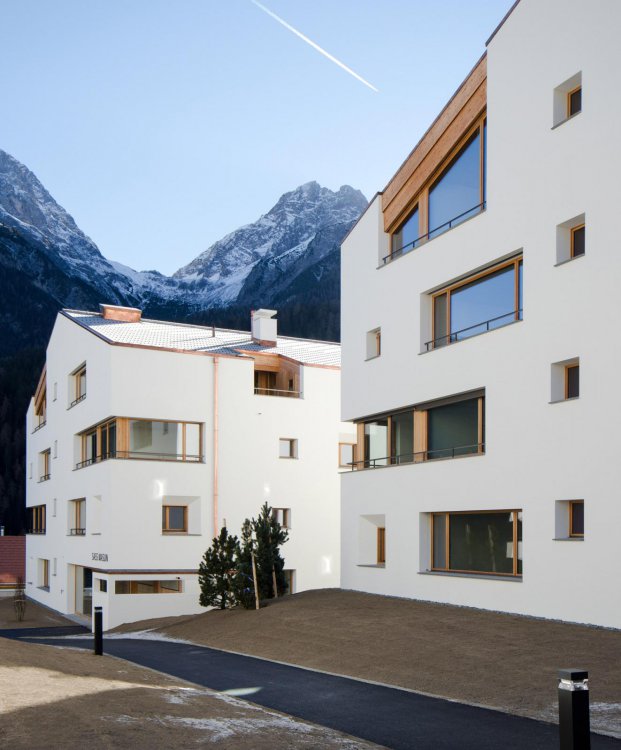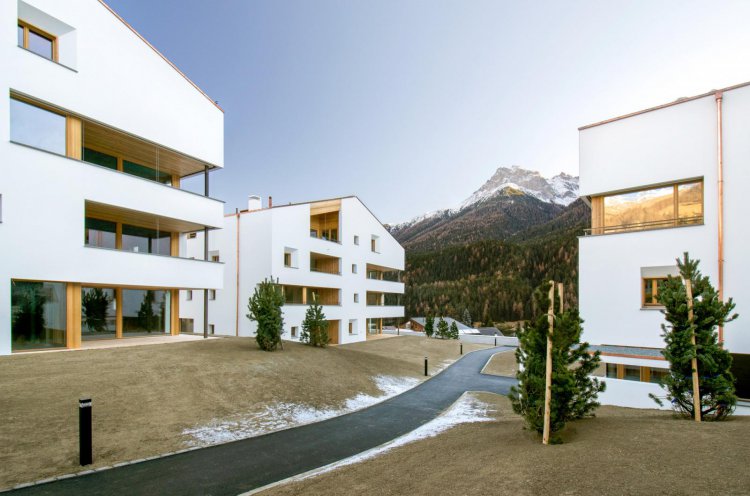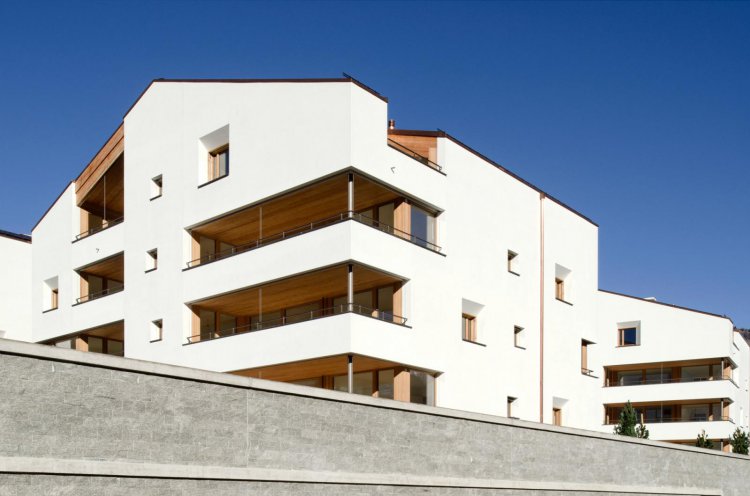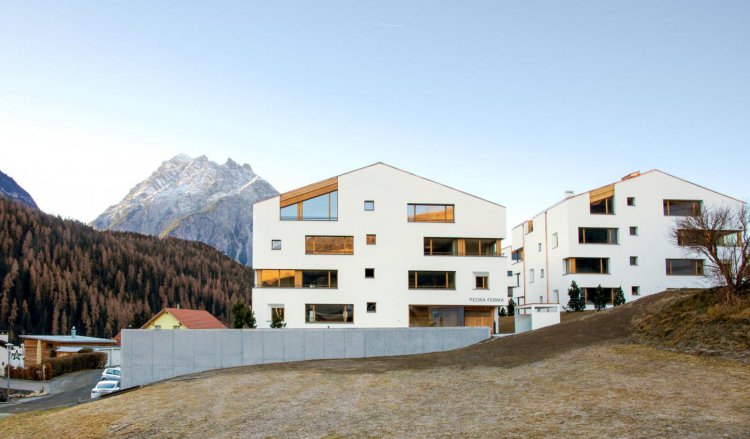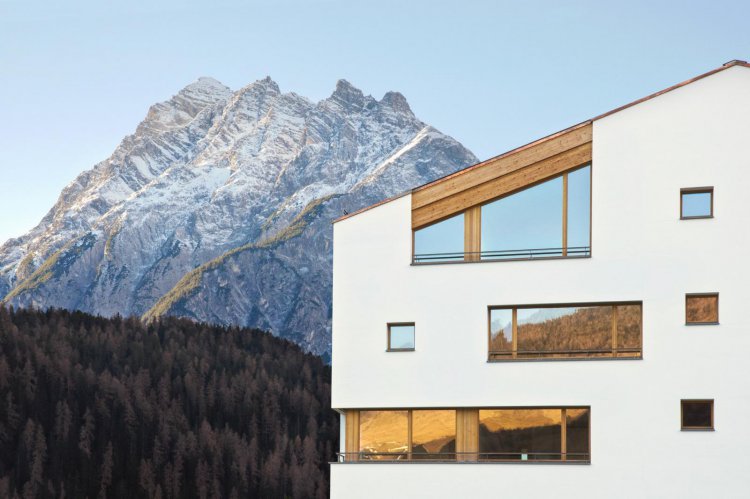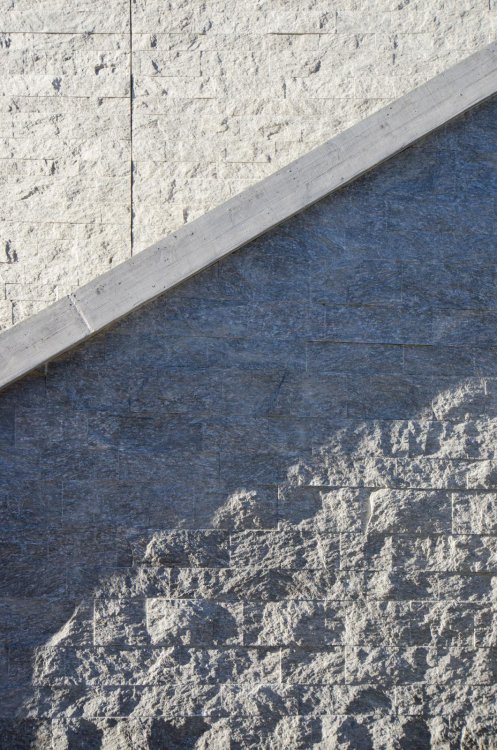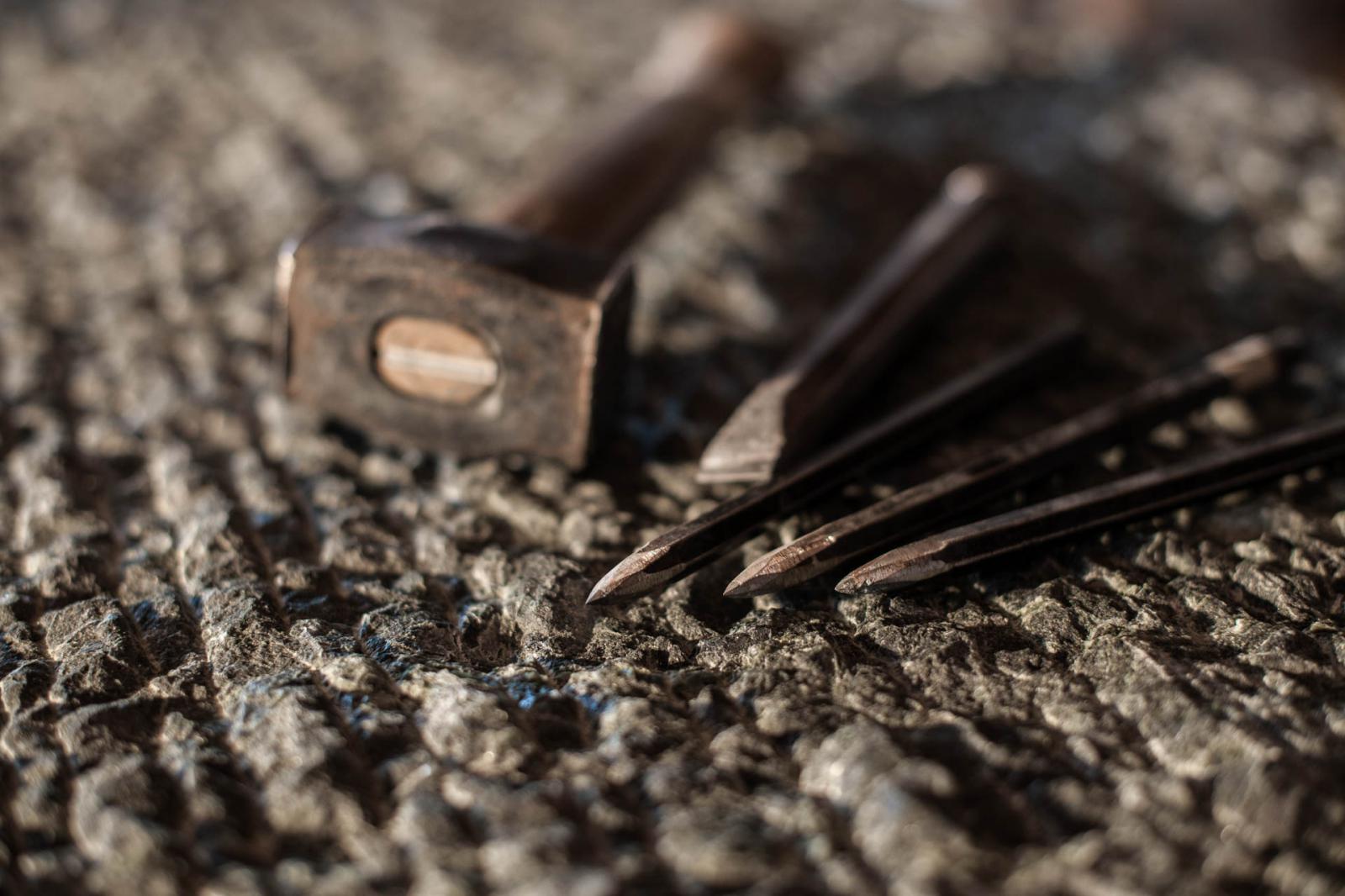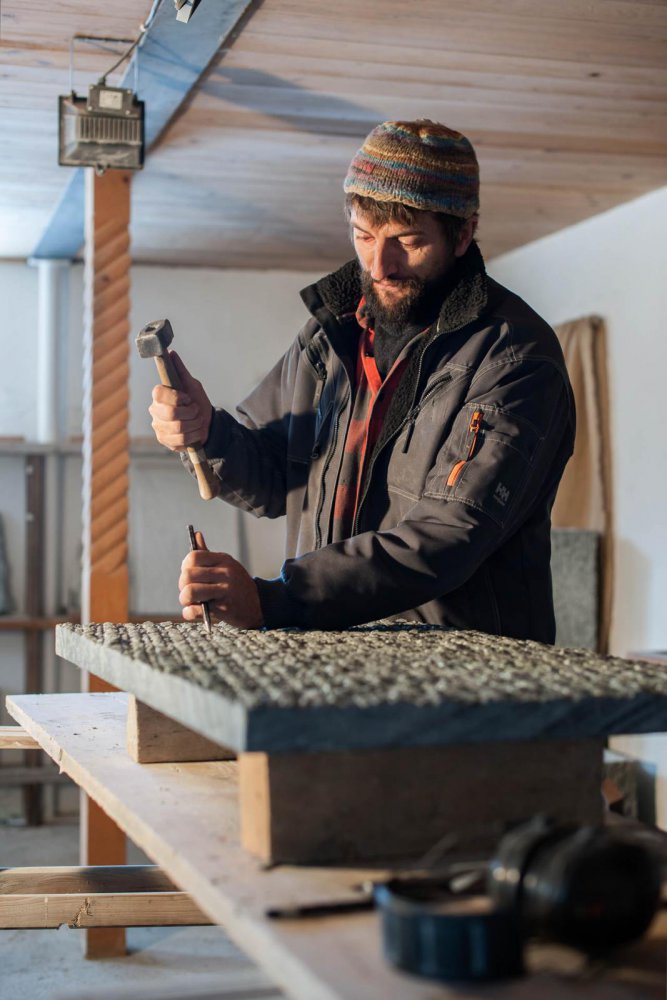A new, lively neighbourhood
The new neighbourhood in Scuol combines tradition with the modern, nature with art, quick accessibility with calm tranquillity. All this makes Monolit into a little paradise in a unique oasis in one of the Alp’s most beautiful valleys.
Generous and hospitable
The new residential estate, located between Pu?tvia and the Via Sotchà Dadora is made attractive by its well-lit, open and relaxed community concept. The structural elements of the nine apartment buildings, placed variously in a natural configuration, are made accessible on foot by lit pathways, and are surrounded by generous amounts of green area. The individual, large monolith shapes produce the impression of rock pillars placed along landscape contours, between which spread broad spans of open space. Each house is equipped with covered bike storage.
From the underground garage, one gains access by lift directly to the apartments. A playground and communal area are also extant. The settlement opens fan-like toward the valley and enables each individual building an optimal orientation to the sun as well as the panorama of the valley of the Inn.
Permanent residence or holiday flat – rent or purchase
In the new residential quarter, MONOLIT, virtually anything is possible: there are quotas set for both primary and secondary domiciles, as well as condominium or rental apartments. This various-use concept, but more importantly, the high proportion of primary domiciles, guarantees a lively residential quarter with a familiar and friendly atmosphere, which also integrates holiday flat owners into both the village and the immediate community.
Traditional forms – newly interpreted
These modern Engadin houses define the new traffic-free residential estate, MONOLIT. They are derived from the old and familiar Engadin house, by retaining the general form with reproduced simple shapes. The partially over-sized window openings and verandas enable the panoramic views to the exterior that are often lacking in historical buildings, without affecting the aesthetic power of the overall form. The, in some cases, playful borrowing of and reference to formal themes of the traditional Engadin house are unified through MONOLIT with the contemporary demands of modern living. The exciting composition of the exterior façade has realized a combination of typical Engadin window openings and modern, expansive bay windows that encompass the structure and coalesce with the archaic, protective building shell in a natural and harmonious way. The whitewashed cubes, combined with the larch wood windows, doors and veranda alcoves, also maintain a strong connection to both the region and its traditions.
For the MONOLIT residential estate, the Graubünden native and stone sculptor, Linard Nicolay, created a relief for every house, each hewn from a different rock-type from this very region, ranging from Granit, Gneis and Quarzite. In this way, these works are connected with other regions of Graubünden.
Linard Nicolay conscientiously avoids that which is often sought or desired. His new works, through their reduced forms, create stronger statements. The arrangement of the cubic blocks and surfaces is determined predominantly by the choice of clear proportions and the consistently manipulated surfaces. While Nicolay’s cube-penetrated steles require space, the reliefs are even further reduced; the spatial dimension is decreased to a minimum.
There are pure surfaces, pictures of stone, where the colours, textures and grains of the material connect with the series of lineal patters and structures from the artist’s hand. The programmatic syntheses of the coincidental and the intentional mix into a convincing and unified whole. Through Nicolay’s work, the stone retains its identity, which, through the process of manipulation, is given its full worth as equal, living force. It is not thrust into a form, but instead remains as a material both visible and touchable. These timeless steles and reliefs remind the viewer somehow of archaic fragments from prehistoric times, and simultaneously of geometric abstractions of tangible art.
Linard Nicolay
Linard Nicolay, born in 1966 in Bergu?n/Bravuogn, graduated with a humanities degree from the University of Bern and continued studying art for several years in Paris (Académie Julian, Ecole du Louvre, Ateliers Beaux-Arts Ville de Paris), and finally rounded off his studies in Italy where he attended the Accademia di Belle Arti di Bologna, and was awarded his degree. Since 2005 Nicolay has lived between Zurich und Rueun.
